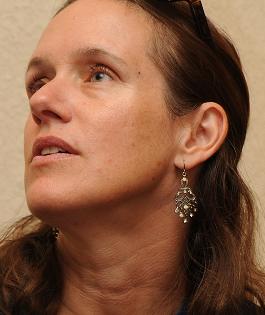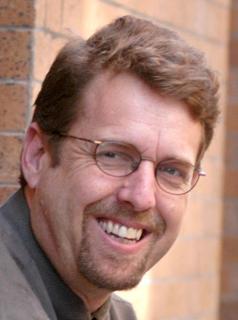| Site Visits and Civic Engagement |
![PDF-NOTE: Internet Explorer Users, right click the PDF Icon and choose [save target as] if you are experiencing problems with clicking.](http://rsnonline.org/templates/rsntemplate-smallmasthead/images/pdf_button.png) |
 |
|
Page 1 of 3 Marianne Delaporte, Notre Dame de Namur University, and Hans Wiersma, Augsburg College
Encountering and Engaging a More Diverse Vision of “the Civic”This article concerns two different versions of a similar teaching strategy: that is, learning about religious communities by visiting them in their “natural setting.” Each of us, in different courses and our different educational institutions, sought to move students out of the comfort of the somewhat “secular” religious studies classroom and into sacred spaces of gathering and worship. Our hoped-for outcome was that students would, upon reflection, better understand and appreciate the religious diversity and complexity of their neighborhoods and, by extension, the world. The teaching strategy for Delaporte’s combined upper- and lower-division course, “Modern Christianity,” spanned an entire semester. Students were given the choice of five relatively new Christian organizations or movements: African Methodist Episcopalian (A.M.E.), Latter-Day Saints (Mormon), Pentecostal, Unitarian Universalist, and Seventh-Day Adventist. With a class size of twenty, each denomination had four students assigned to it. Students first individually researched and wrote two papers related to this assignment: one on the history of their selected denomination, and another on its theology. Next, as a group, they visited a church service in the area, and each group handed in a written report on their visit. Students then studied media representations of the group on the Internet, searching YouTube and Google to learn about the manner in which their denomination is portrayed in mainstream and other media. The assignment culminated in a group presentation for their classmates. The teaching strategy for Wiersma’s “Life and Work of the Church” course consisted of experiences at four different local religious and/or spiritual gathering places: 1) A tour of a Roman Catholic basilica; 2) An open house at an Islamic center and mosque; 3) A discussion — over herbal tea — with the owner of a shop featuring books, goods, and services pertaining to “alternative” religions and spiritualities; and 4) A “Holy Week” service at a Charismatic Lutheran Church. The thirteen students in this upper-division course visited each site as a group, along with Wiersma. In addition to debriefing and discussion at the conclusion of each visit, students submitted written reflection assignments in which they offered “in-depth” commentary on their experience. Specifically, students were asked to explain how the site visit informed their understanding of several concerns, including the relationship of Christian believers to the “Other” and the notion of hospitality as a theological and biblical category. Like any exercise in community engagement, our efforts required extra preparation on the part of the teacher before the start of the term as well as during it. Contacts at the various sites had to be established, transportation had to be organized, reminders about appropriate dress had to be sent, anxious students had to be heard and reassured, and so on. We prepared students in advance of their site visits by alerting them to matters concerning proper courtesy and conduct, as well as discussing with students what they might expect at the respective sites. After their visits, generally speaking, students reported that they were initially nervous about their visits but, in the end, were impressed by the welcome and hospitality they experienced at their host sites. In addition, students reflected favorably on “just how much” they learned through this type of contextual learning opportunity. For students, the experiences gained and shared served as ongoing reference points in and out of class. For example, in Delaporte’s class, students were able to refer back to their experiences during discussions of different theologies of the sacraments in a way that most of them could not have done before, precisely because they had witnessed and participated in unfamiliar liturgies. Wiersma’s students, for their part, continued to compare and contrast the different styles of hospitality and welcome exhibited at each of the sites, and to make connections to the possible theological and ethical underpinnings of the different styles of reception. It came as no surprise when we learned, via student course evaluations, that the site visits were considered by many students to be the highlight of their course. |


 Marianne Delaporte is chair of the philosophy and religious studies department at Notre Dame de Namur University in Belmont, California. She received her PhD in Church History from Princeton Theological Seminary. Her focus has been on Merovingian and Carolingian hagiographies and the political and theological implications of these vitae. Delaporte is currently working on a book on embodied theology and examining women’s experiences of childbirth, both historically and in the present. She met Wiersma at the Wabash Center for Teaching and Learning in Theology and Religion, which she still considers one of the greatest vacations ever.
Marianne Delaporte is chair of the philosophy and religious studies department at Notre Dame de Namur University in Belmont, California. She received her PhD in Church History from Princeton Theological Seminary. Her focus has been on Merovingian and Carolingian hagiographies and the political and theological implications of these vitae. Delaporte is currently working on a book on embodied theology and examining women’s experiences of childbirth, both historically and in the present. She met Wiersma at the Wabash Center for Teaching and Learning in Theology and Religion, which she still considers one of the greatest vacations ever. Hans Wiersma is assistant professor of religion at Augsburg College, Minneapolis, where he teaches courses in theology, biblical studies, church history, ministry, and religion and culture. He is coauthor of Crazy Talk: A Not-So-Stuffy Dictionary of Theological Terms (Augsburg Fortress Publishers, 2008) and Crazy Book: A Not-So-Stuffy Dictionary of Biblical Terms (Augsburg Fortress Publishers, 2009). Wiersma has developed and written various curricula for Augsburg Fortress publishers and is a participant in the Wabash Center’s “Pedagogies of Civic Engagement” workgroup.
Hans Wiersma is assistant professor of religion at Augsburg College, Minneapolis, where he teaches courses in theology, biblical studies, church history, ministry, and religion and culture. He is coauthor of Crazy Talk: A Not-So-Stuffy Dictionary of Theological Terms (Augsburg Fortress Publishers, 2008) and Crazy Book: A Not-So-Stuffy Dictionary of Biblical Terms (Augsburg Fortress Publishers, 2009). Wiersma has developed and written various curricula for Augsburg Fortress publishers and is a participant in the Wabash Center’s “Pedagogies of Civic Engagement” workgroup.